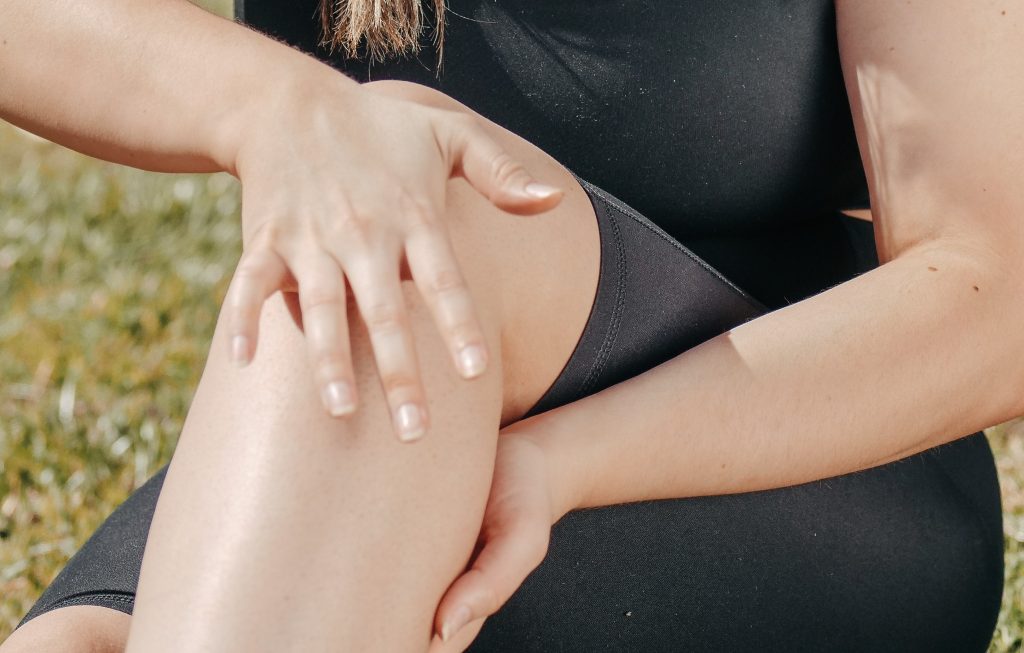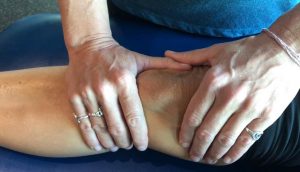
ACL tears are very common, especially among athletes and highly active individuals. They’re so common that they are highly researched… but despite the research, they’re still not fully understood.
Read more about ACL tears, protocol, and general rehabilitation.
For years, the first line of treatment for ACL tears has been surgery in the form of reconstruction or repair. Surgery is always followed by months of rehabilitation and a subsequent slow return to activity or sport. Full recovery for return to sport takes about a year.
Surgery remains the typical first line of treatment. But what happens if you don’t get surgery? Can an ACL heal on its own?
Non-surgical treatment might be a viable option, but not for most… although the verdict is still out according to recent research. Here’s the lo-down.
What Happens If I Don’t Get Surgery?
An ACL’s main job is to prevent excessive movement in the joint. Too much motion in the joint can feel unstable or painful. Without an ACL, the knee joint’s unnecessary shifting can wear away at the cartilage causing fraying and tears, eventually leading to other injuries in the joint.
Left unchecked, it will lead to arthritic changes and pain with day-to-day life.
There are ways to prevent this, though. Bracing helps temporarily, but rehabilitation is key in stabilizing the knee with muscular support to supplement for the lack of internal support. This may be great in preventing injuries with everyday stress of the knee. However, muscular support alone may not be bulletproof against contact sports or those that involve heavy cutting and agility.
As ACL treatment has evolved over the years, more people have been choosing the unconventional route of non-surgical treatment with rehab only. And, naturally, researchers follow those cases closely to see who has the best outcomes and why.
In doing so, they’ve found that there are several cases where the ACL will spontaneously heal. Although it’s uncommon, it does happen, and researchers are trying to figure out:
- Who can spontaneously heal
- What conditions are best
- How it happens
What has research seen so far and what does it mean for you?
What Does Research Say About Spontaneously Healing ACLs?
A spontaneously healing ACL refers to one that healed without surgery as demonstrated using an MRI.
In 2021, a systematic review was published to determine where research stands regarding spontaneous ACL healing. This study analyzed nine other studies to find trends and holes in research thus far. (2)
Assuming no other coinciding injury is present with the ACL tear, this study determined that:
- Rehabilitation is critical for success, despite surgical or nonsurgical approaches.
- Of all nine studies that allowed the ligament to heal spontaneously, 100% of them showed some degree of healing on an MRI.
- Just because the ACL shows some healing does not mean that the knee feels stable.
- All studies stress the importance of movement and loading to promote healing.
- Bracing during the early rehab phase could protect the ligament as it develops new tissue.
- A tear that happens from the femur (thigh bone) has a better chance of healing on its own as opposed to a tear from the tibia (shin bone). This is likely because the femur attachment of the ACL is closer to blood supply than the tibia attachment.
- There is no existing evidence yet to determine if ACL surgery or spontaneous healing have better results against the development of arthritis.
- Therapist-led rehab is critical regardless of surgical status!
Observations from a recent study this year (2022) also suggest that spontaneous healing of an ACL may be more common than we think when guided by a physical therapist. At the 2-year mark, patient-reported outcomes are great, but there’s still no evidence on long-term effects such as osteoarthritis development. (1)
So, can an ACL tear heal on its own? Research seems to think it does sometimes, but highly depends on a lot of controllable and noncontrollable factors.
What Does This New Research Mean for Me?
Here are the main implications for you based on research thus far.
- You must listen to your physical therapist! Your recovery depends on it, regardless of surgery.
- It is possible for an ACL to spontaneously heal at some degree, but there simply isn’t enough research yet to determine if a nonsurgical option is best for everyone. This is especially true for:
- Complete ACL ruptures
- Complex ACL tears where other structures are involved
- Long-term outcomes and functionality, including arthritis development
- There are certain circumstances that are better for spontaneous ACL healing, and others that are not. It is highly individual and may come down to doctor recommendation.
- Early movement is important for healing in general, so if your therapist and surgeon have cleared mobility and strengthening, don’t be afraid to do so.
Discuss Options with Your Doctor
The research regarding spontaneous healing of an ACL rupture is very new.
This blog alone should not determine if you should get surgery or not. If anything, it should highlight the fact that rehabilitation is essential to your recovery no matter the treatment approach.
It is possible for ACLs to heal on their own, but it is unpredictable at this time. There are risks in surgical and non-surgical options. However, surgical treatment is currently the most reliable option for patients across the board.
Always discuss options with your doctor or surgeon. He/she will be able to guide you toward the right treatment option for your unique injury and surrounding circumstances.
Need Help Healing from Your ACL Tear?
ACL injuries are one of the most common conditions we treat at JACO Rehab. We see patients:
- Before their surgery for prehabilitation
- After their surgery for rehabilitation
- Who do not choose surgery
- Who have complex cases where the meniscus, MCL, or other ligaments are involved
- Who are all ages and all activity levels
Need help healing? That’s what we’re here for! Contact us to schedule an appointment at JACO Rehab at any one of our Oahu locations: Honolulu, Mililani, Waikele, or Kapolei.
References
- Filbay, S., Roemer, F., Lohmander, S., Turkiewicz, A., Roos, E. M., Frobell, R., & Englund, M. (2022). SPONTANEOUS HEALING OF THE RUPTURED ANTERIOR CRUCIATE LIGAMENT: OBSERVATIONS FROM THE KANON TRIAL. Osteoarthritis and Cartilage, 30, S21-S22.
- Pitsillides, A., Stasinopoulos, D., & Giannakou, K. (2021). Healing potential of the anterior cruciate ligament in terms of fiber continuity after a complete rupture: A systematic review. Journal of Bodywork and Movement Therapies, 28, 246-254.
